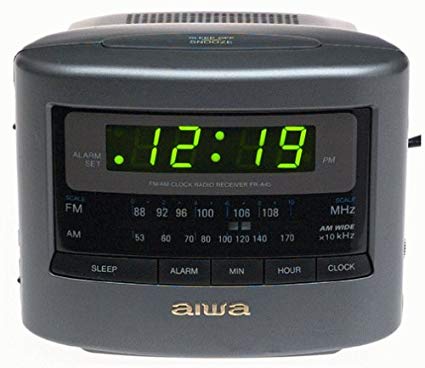While at the Munich High End Show last month, I saw portable audio gear the size of my hand. And, as I mentioned in my video, I also encountered systems that were decidedly un-portable, and would’ve required forklifts to move and which cost over a million bucks. As it turns out, I wasn’t much impressed by those living room Stonehenge systems.
Why?
They just weren’t that good. And you likely know what I mean: “that good” is shorthand for “not as good as I’d expect for that much money, and certainly not a million bucks’ good.” I expect any major system to create the sense of being in the presence of a live performance, and most did not. And of course, as the prices go up, so do the expectations.
When unrealistic expectations meet the law of diminishing returns, the law of diminishing returns wins, every damn time. Bet on it. It’s as reliable as gravity. Maybe more so.
Some of those big-boy systems couldn’t carry a beat in a shopping bag. Not to obsess in Brit-speak about PRAT, but it’s important: I may not be able to boogie worth a damn, but I expect my stereo to make me want to boogie. Besides which— to echo the constant refrain of mentor Paul McGowan— “there’s NO BASS.” The eye can sometimes fool the ear into thinking that what should be there actually is, but there were systems that had multiple mega-woofers that didn’t deliver significant dynamic impact, and would’ve left E. Power Biggs saying, “now wait a minute…”
I’ve worked around talented audio folks for decades, but so far no one has come up with a magic formula for what makes a system have the jump, the drive, of real live music. Some big systems have it; many don’t.
The other side of the equation is…how is it that some super-simple, cheap pieces of crap are able to deliver that feeling?
My first personal audio system wasn’t a system, but a simple, small transistor radio given to me by my grandma. Back then—early ’60s—the single word “transistor” was often used to describe these tiny radios whose pocketability enabled them to provide the soundtrack for a generation. For me and millions of others, they were a way of carrying the secret of our music wherever we went.
Sure, those little guys had limits; having taken off the back, I knew that the speaker in mine was only an inch and a half across. It would take real systems to introduce me to to the joys of bass (“holy CRAP! Paul McCartney’s REALLY GOOD!” I exclaimed after really hearing his lines for the first time), but still, that little radio managed to convey rhythm and emotion better than many full systems.
How?
Flash forward to, oh, the late ’80s. I think. My aged Sony clock radio finally crapped out, and I needed a replacement. Being a dilligent audio geek, I went to stores where such things could be tried out, and tested. Many of the units I played with sounded as you’d expect: thin, plasticky, with no rhythm, no highs, not much of anything, really. Intelligibility was barely good enough to follow an AM broadcast of a baseball game. Complex music? Forget it.
I finally stumbled upon a chunky clock radio from Aiwa—never a major brand, later a Sony subsidiary, still later non-existent. It didn’t occupy a lot of table space, and had a low center of gravity—important for an unhappy awakener like me, prone to slamming my hand down on the snooze button. But the amazing part: it sounded good. Music played through it had drive, momentum, an indication of bass if not actual bass, and it didn’t dissolve into murk when things got loud or complex. Huh.
I bought it, of course. I don’t recall the price, but I think it was less than $20. In the years since then, I’ve replaced a half dozen televisions, several computers, even a few pricey bits of audio kit that went blooey. But the Aiwa keeps—well, not ticking, but keeping time, and the radio still works perfectly. The good news is that it’s analog, so I can sneak up on weak stations and pull them in when they’re next to a stronger station. The bad news is that it’s analog, with a rather cheesy tuning dial and no presets, so if I want to listen to another station, it’s a bit fiddly.
And it still sounds great. I can lay in bed and listen to music programs and actually enjoy them, not just kinda hear them.
I wonder if there’s a converse to the law of diminishing returns—say, the law of lowered expectations (and no, not the dating site from MAD TV). Maybe when you don’t expect much from something, and it exceeds whatever expectations you do have—that your perceptions of its performance are enhanced, and perhaps inflated? Surely, by hi-fi gear standards, this thing ain’t great…and yet, I’ve enjoyed listening to it more than I have many very expensive stereo systems with great pedigrees and presumptions of greatness.
Maybe this is a subject we should spend more time examining. Maybe there are more ways to getting bang-for-buck than we’ve explored.
I don’t know…but this cheap clock radio keeps working, no matter what. After violent attacks from me, after assaults from two growing kids, after having been knocked off the table by dogs, after thousands of miles of moves…it just works.
There aren’t many things in my life that I can say that about. How about you?




